Preventive Conservation
Treating objects in a collection can be important, but it's not enough to keep them safe for the future.
Over time, objects will naturally wear down and break down. The goal of those who work to preserve these items is to slow down this wear and tear as much as possible. Preventive conservation is all about protecting collections by enhancing their surroundings. Some important steps in this process include controlling temperature and humidity, managing pollutants, using proper storage methods such as archival boxes, ensuring safe packing for loans, controlling pests, maintaining cleanliness and organization, preparing for emergencies, following proper handling procedures, and dealing with hazardous materials safely
Relative Humidity, Temperature and Pollutants
All materials react to their surroundings. When the relative humidity is very high, mold can grow easily. Changes in humidity can cause organic materials, such as wood, ivory, and paper, to expand and contract, leading to cracks, broken paint, and warping. Dust, sand, and soot from urban and agricultural areas can enter museums, potentially harming objects. Sharp particles, such as sand, can scratch surfaces, while soot can be grimy and acidic, causing discoloration, making organic materials brittle, and corroding metals.
It is usually more cost-effective to prevent damage to objects than to repair them after they have been harmed. For instance, acidic air pollution from city traffic has caused a gold alloy figurine from Peru (FMNH 2414) to tarnish, except for the areas covered by varnish, which display its catalog number.
Some materials are not very stable and need specific environments to prevent further damage.
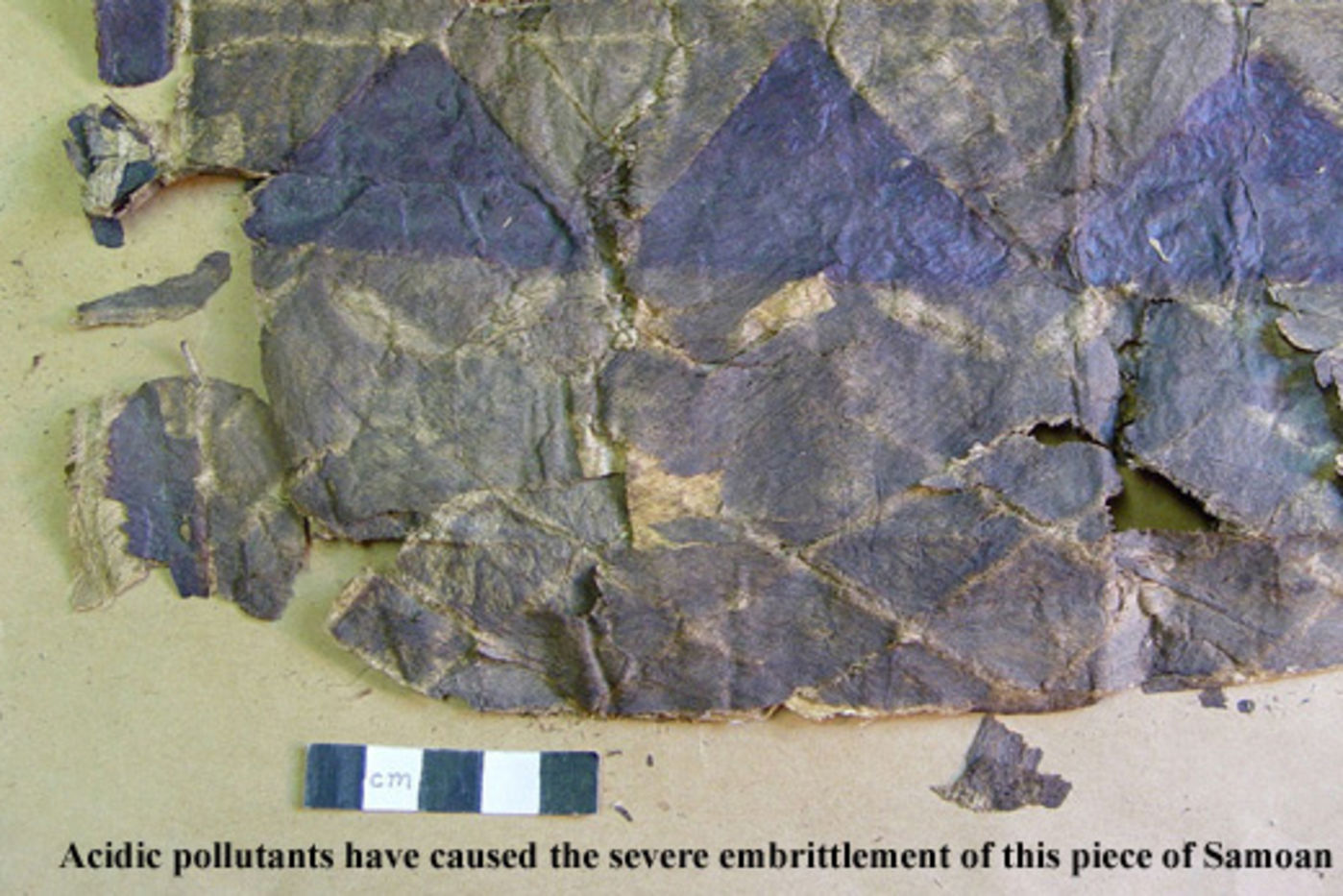
An example is soda-lime-silica glass, which can degrade when exposed to high and fluctuating humidity, a condition known as glass hydration disease. This type of glass will continue to deteriorate unless it is maintained at a stable humidity level of 40-42%.
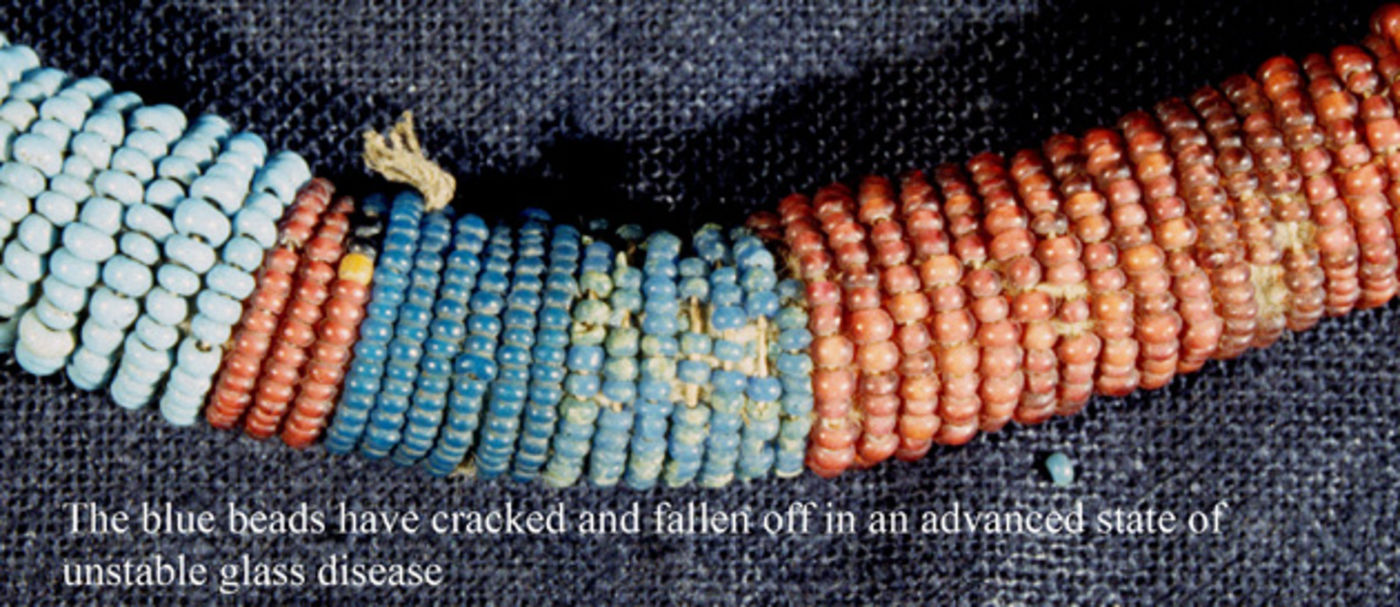
Additionally, the white crystals found on some glass beads result from flux and stabilizer ions that leached out due to changing humidity levels. These ions, combined with carbon dioxide in the air, create white carbonate minerals.
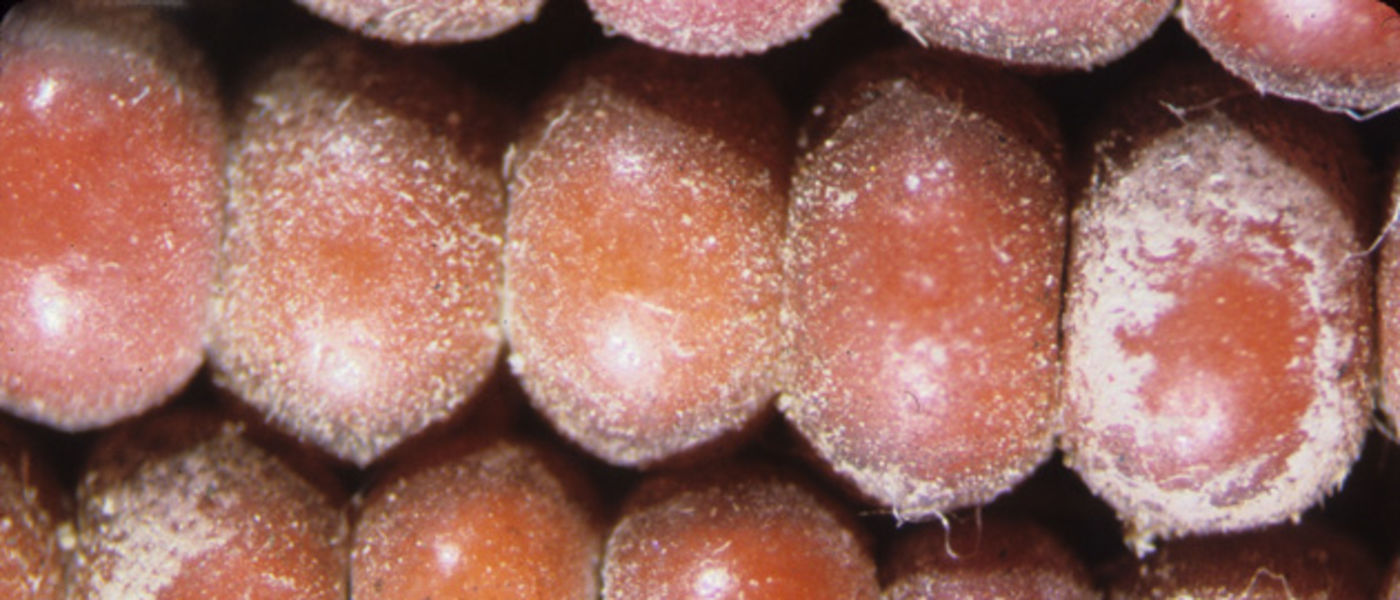
Archival Housing
For long-term preservation, it is important that the housing for objects provides physical support and uses archival materials. Archival materials are chemically stable, meaning they won’t harm the object over time. Conservation staff carefully examine manufacturer data and perform tests, such as artificial aging and chemical analyses, to choose the best materials for storage and display. The structure and condition of each object help determine the type of support needed to prevent distortion or breakage over time.
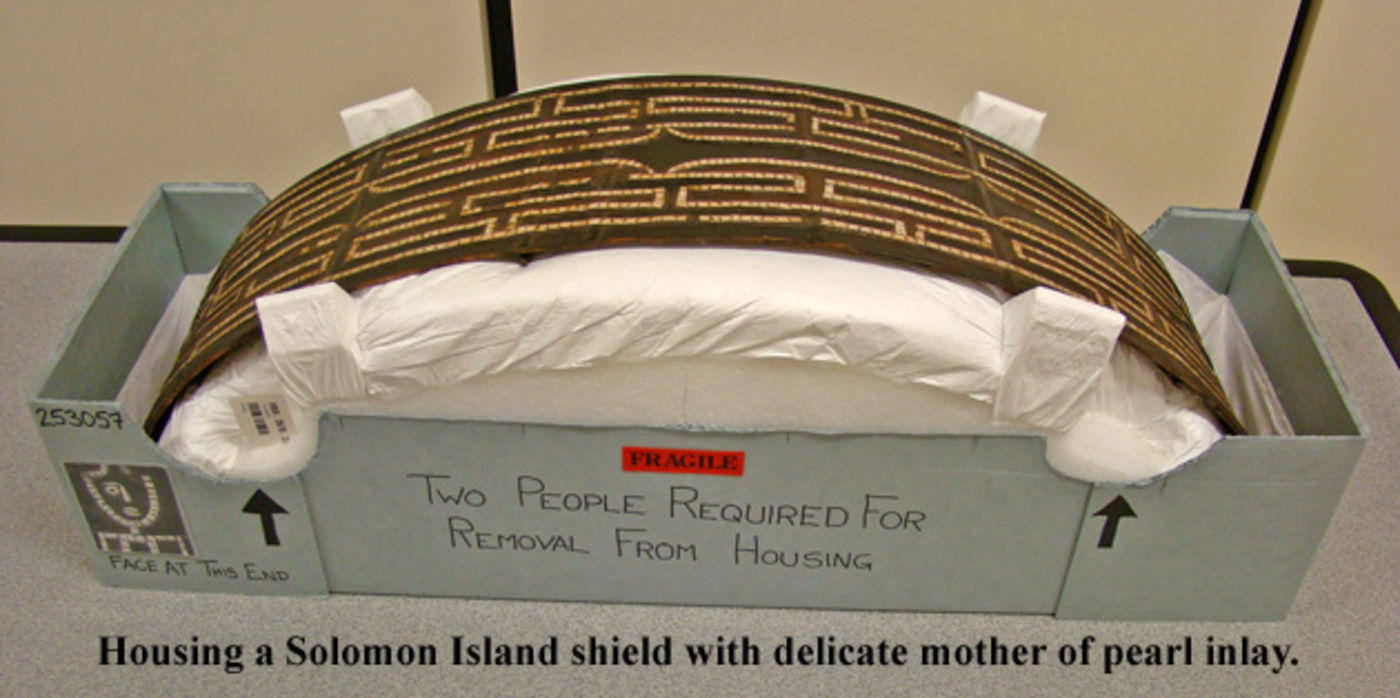
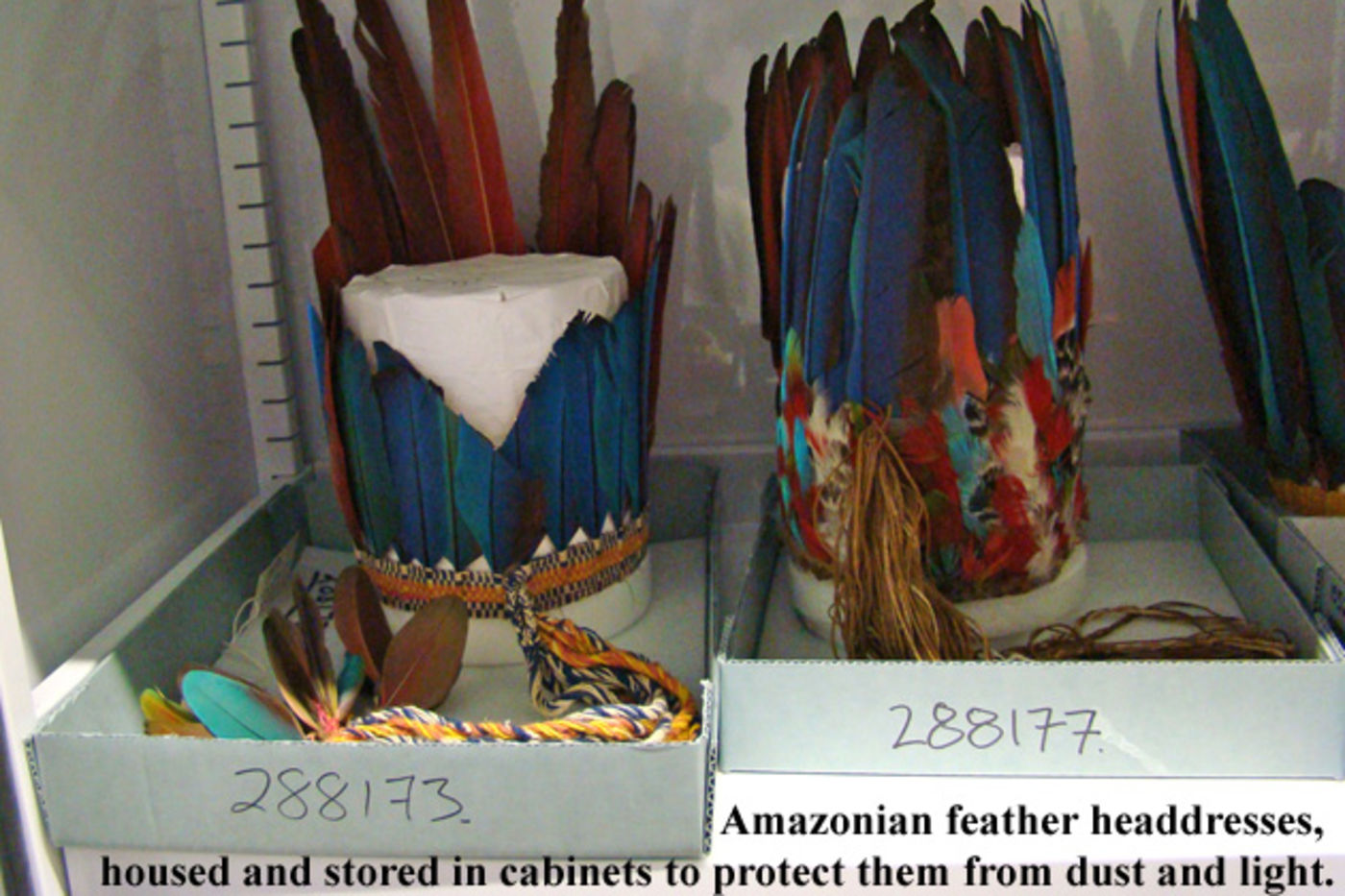
Loan Documentation and Packing for Transport
When objects are borrowed by other institutions, they are carefully checked to ensure that they can travel safely. They are also packed in a way that helps reduce the vibrations and shocks that can occur during vehicle or air transport.
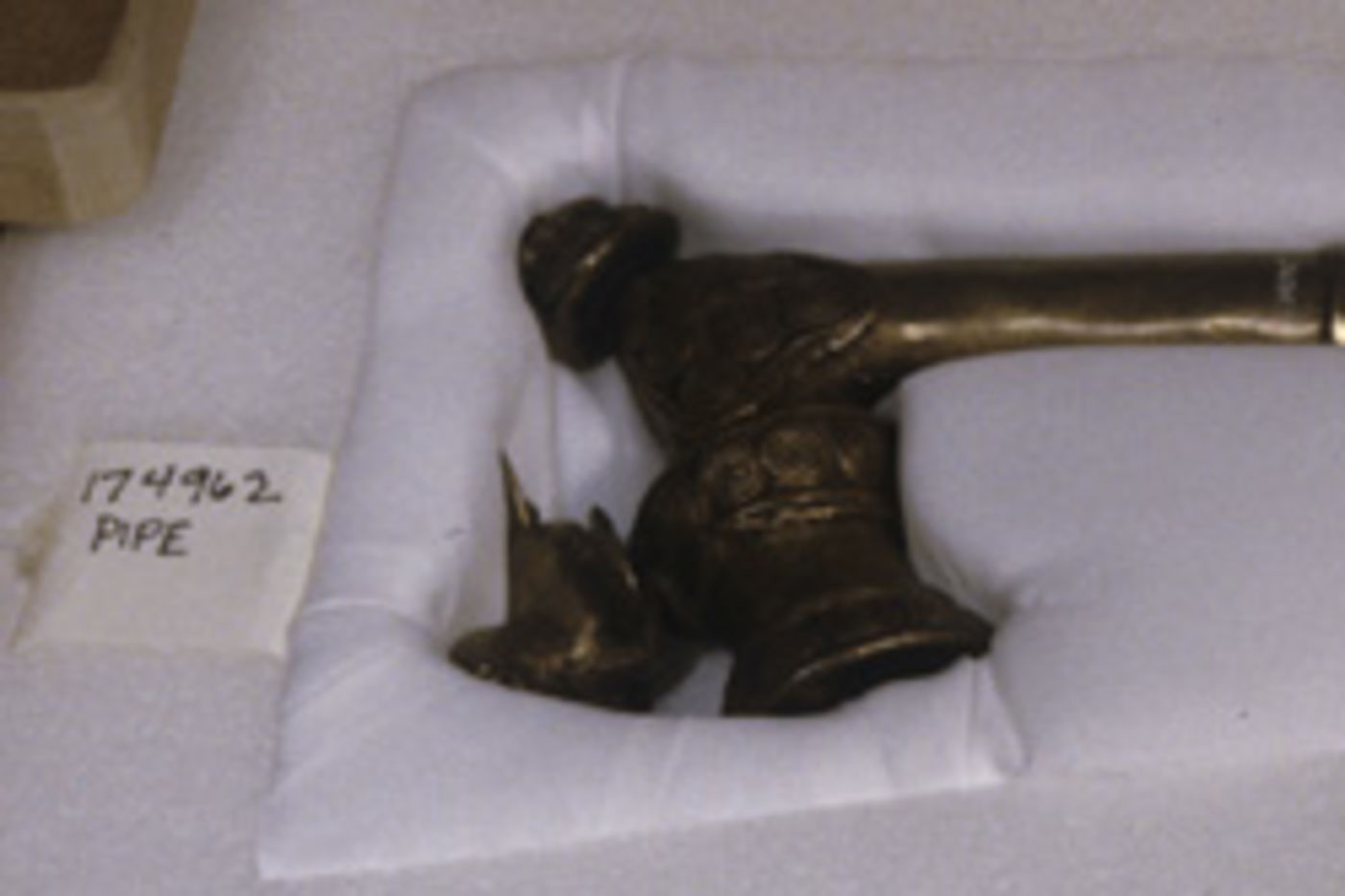
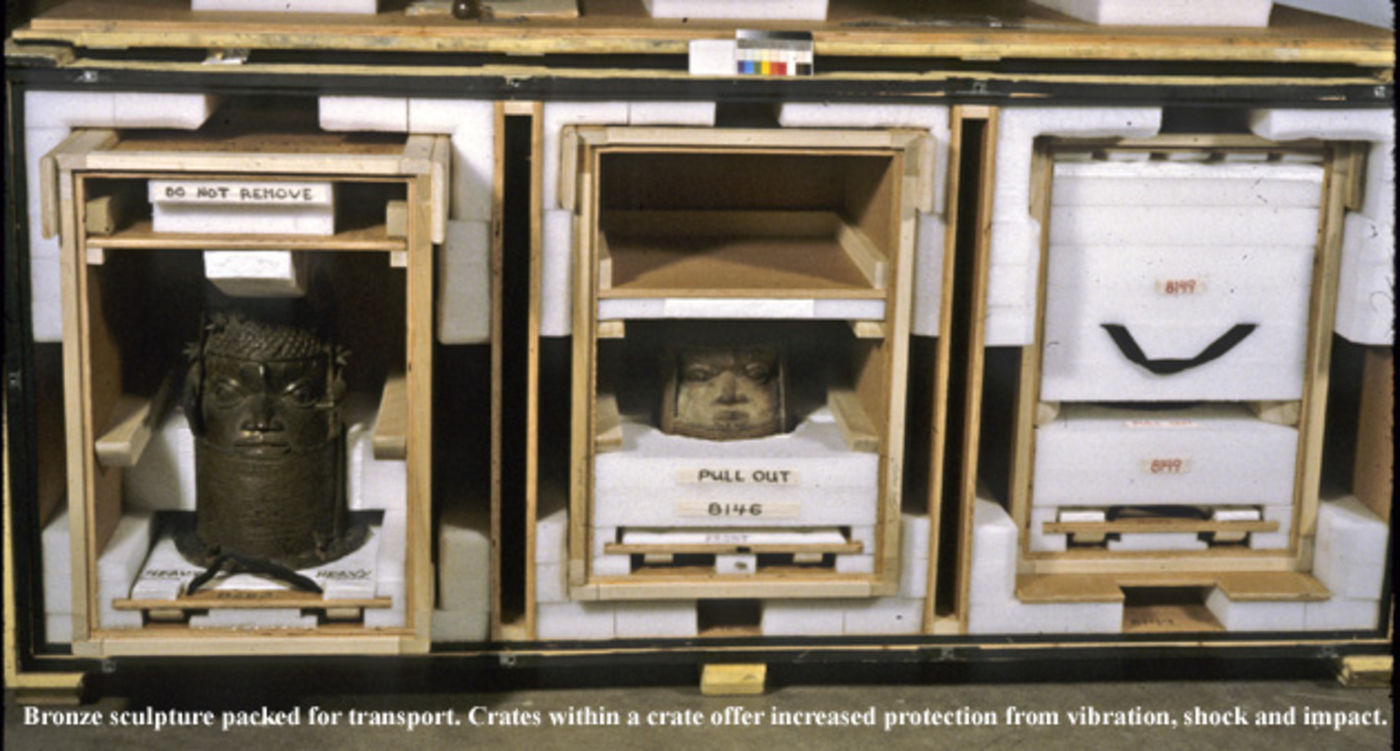
IPM (Integrated Pest Management)
Protecting the museum's collections from damaging pests is a job that involves everyone. The Museum Pest Committee comprises members from various departments within the museum, including Facilities, Housekeeping, Collections, Exhibits, Special Events, Administration, and Institutional Advancement. They work alongside pest specialists and entomologists to monitor any pest activity in the museum and its surrounding grounds. The Committee also gives advice on how to manage and respond to pest issues. The staff in the Department of Anthropology pay special attention to this problem because many items in their collections can attract insects, rodents, and mold. They are very aware of the risks that a pest infestation can cause.
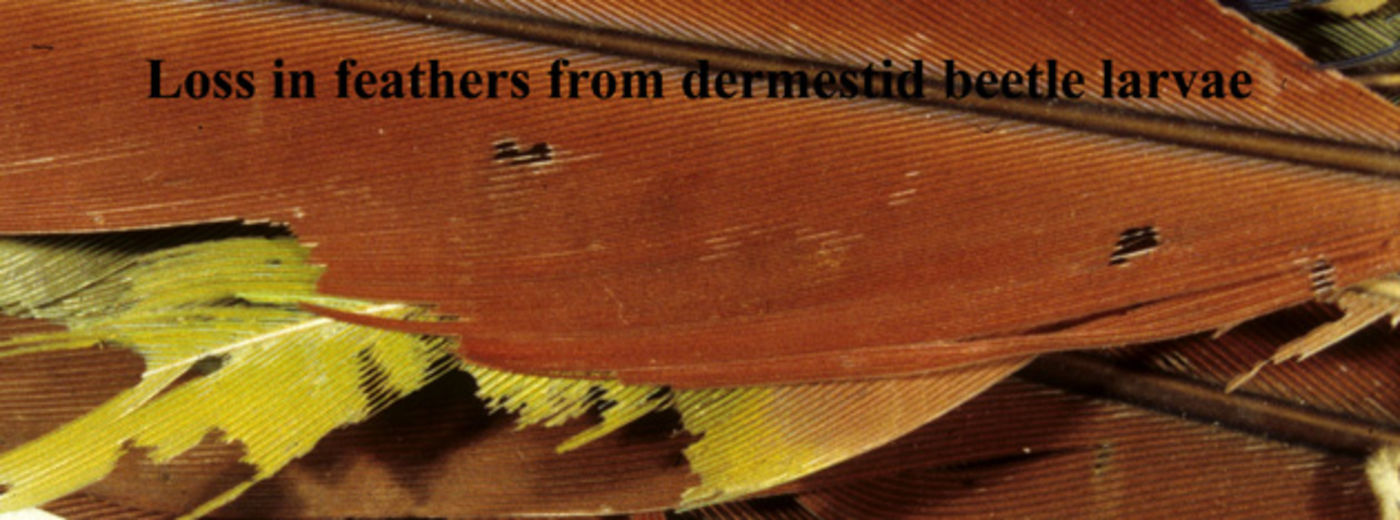
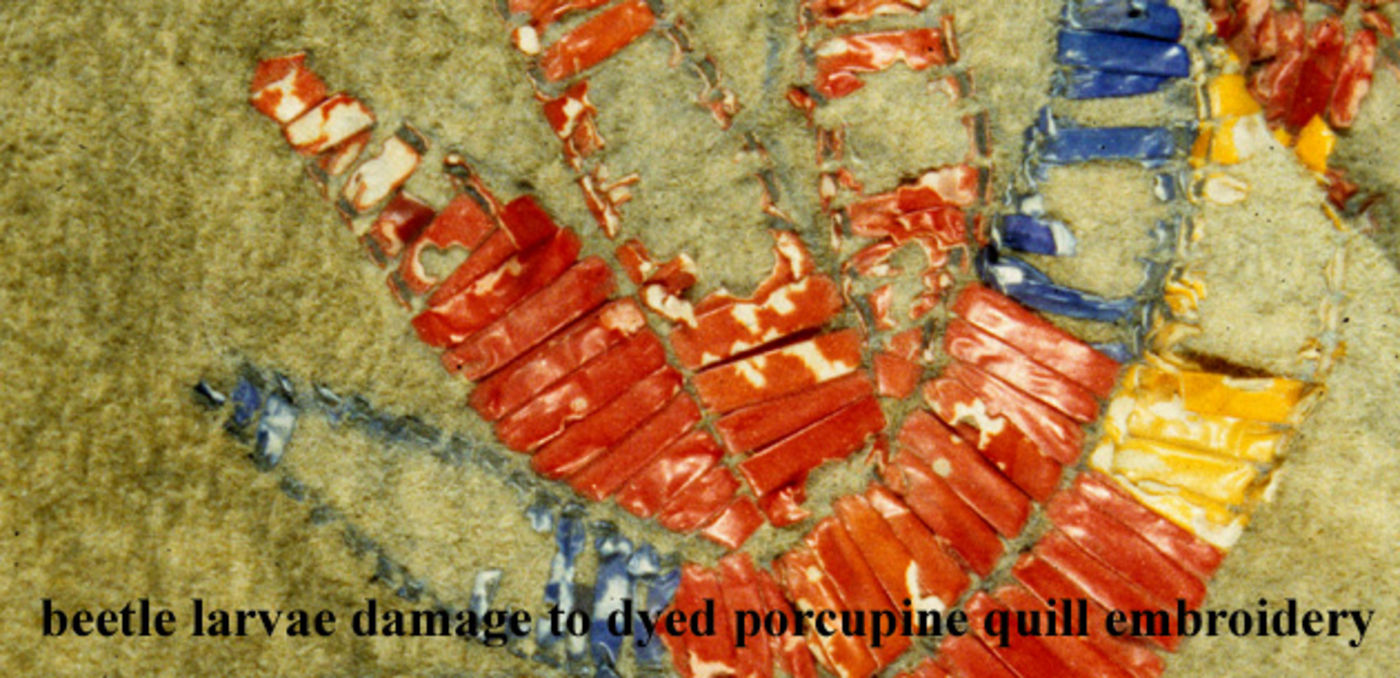
Cleaning and Housekeeping
Dust and debris in collection storage and workrooms create inviting places for harmful pests. When dust settles on objects, it can be challenging to clean off without damaging delicate materials, such as feathers or matte paint. To help minimize dust and dirt, access to storage areas is kept limited. Housekeeping staff clean the workrooms regularly. Additionally, the anthropology team performs a thorough cleaning of all storerooms once a year to remove any accumulated clutter and reduce the amount of dust in storage.
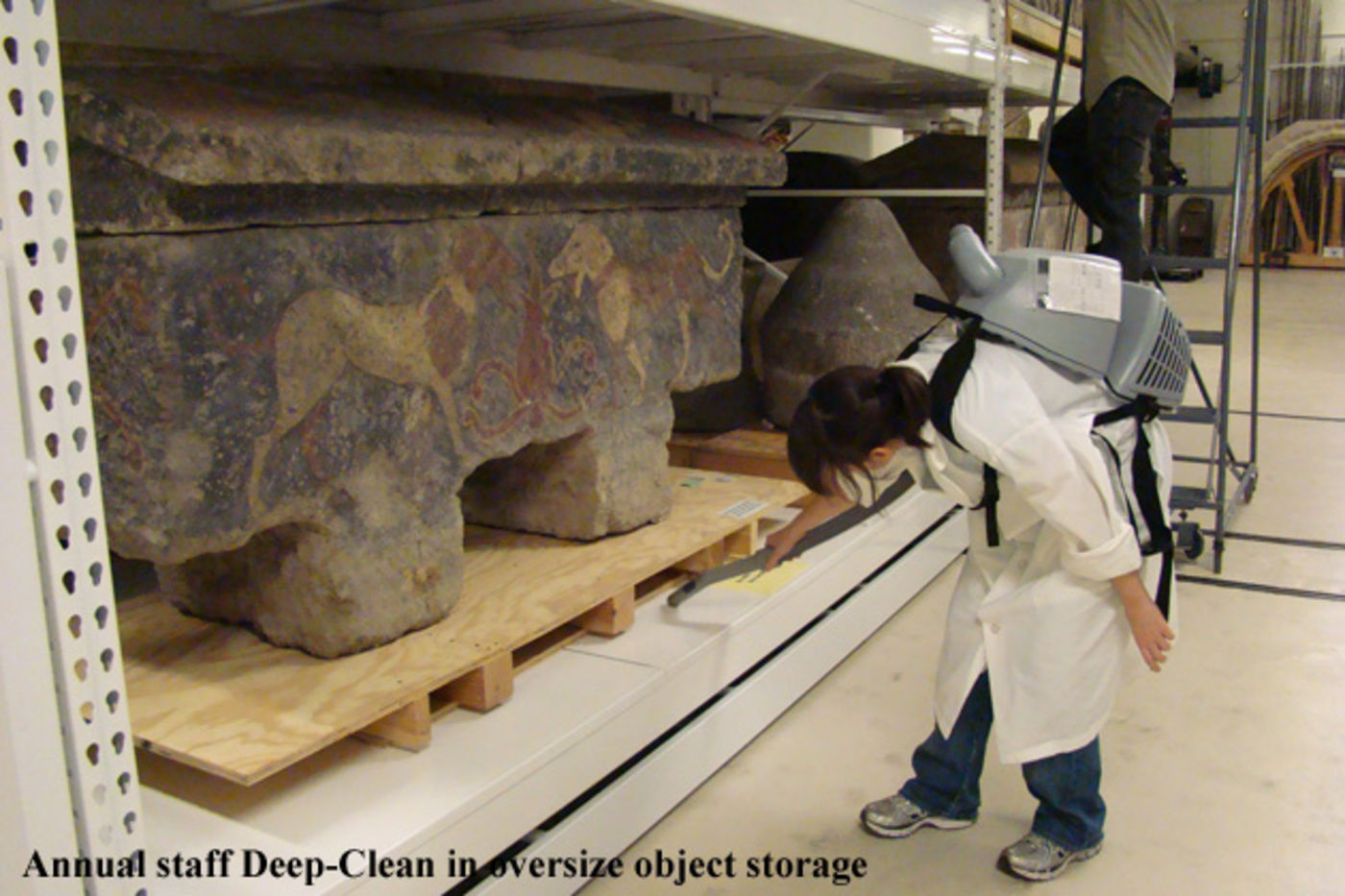
Emergency/Disaster Mitigation and Response
Disaster planning involves identifying potential risks to collections and developing strategies to mitigate them. This can be done by making improvements to the building, storage areas, and display furniture, as well as establishing proper procedures. Disasters can occur due to natural events, such as floods, tornadoes, and earthquakes, or man-made issues, including leaking pipes, broken display cases, and fires.
The Anthropology Department has established a policy and procedures for handling disasters. They work with local agencies, including the Chicago Emergency Response Office, fire departments, police, and other cultural institutions in Chicago, to find available resources. When accidents happen, the museum staff acts quickly to minimize damage to the collections.

Handling
Objects can get damaged or stained if they are not handled properly. All staff members, researchers, interns, and volunteers in the department receive training on how to safely lift, support, and transport these objects. They wear gloves to keep their hands clean and prevent oils, sweat, and dirt from getting on the items. To move objects, they use padded carts with soft, pneumatic wheels, which help protect the items during transport. The team also reviews safe lifting techniques for different types of objects to ensure everything is handled correctly.

Hazardous Materials
Hazardous materials can pose a danger to staff who work with collections. Some of these hazards come from the objects themselves. For example, certain pigments may contain toxic substances, such as arsenic or mercury. In other cases, harmful chemicals might have been used on objects in the past to prevent insect damage. To keep everyone safe, objects are tested for toxins. If any harmful substances are found, the objects are properly housed and labeled to warn others. The Field Museum's health and safety officer, along with public health advisors, has created procedures to protect the staff and researchers who handle these collections. To ensure their safety, staff members wear gloves, lab coats, and sometimes masks.
